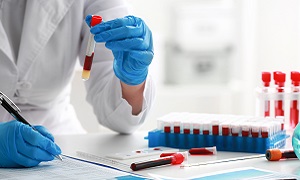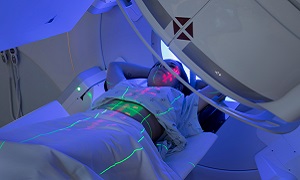Best Leukemia treatment doctors in India
Best Leukemia Treatment Hospitals in India
- City: Bengaluru, India
Hospital Highlights:
- Fortis Hospital Bannerghatta, Bengaluru was established in 2006.
- The hospital is a 276 bedded multi-specialty tertiary care facility.
- The hospital specializes in cutting-edge medical technology and dedicated patient care services.
- The hospital is equipped with state-of-the-art technologies like trans-radial angioplasty, trans-abdominal cardiac surgery, and computerized TKR navigation surgery.
- The hospital provides specialty medical services in cardiology, cardiac surgery, orthopedics, neurology, neuro-surgery, GI, and Minimal Access Surgery (MAS).
- City: Chennai, India
Hospital Highlights:
- Fortis Malar was established in 1992 and was formerly known as Malar Hospital.
- The hospital specializes in cutting-edge medical technology and dedicated patient care services.
- The hospital is multi-specialty, tertiary care facility with 180 beds.
- The hospital offers comprehensive medical care in specialties such as cardiology, cardio-thoracic surgery, neurology, neurosurgery, orthopedics, nephrology, gynecology, gastroenterology, urology, pediatrics, and diabetes.
- City: New Delhi, India
Hospital Highlights:
- Established in 1996, Pushpawati Singhania Research Institute is one of the top hospitals in the NCR region, as well as one of the top facilities in India for gastroenterology. The hospital is one of South Asia’s first institutes in medical and surgical treatment for diseases related to digestion.
- The hospital is equipped with state-of-the art facilities coupled with the latest equipment as well as renowned consultants from various parts of India as well as other parts of the world.
- City: New Delhi, India
Hospital Highlights:
- State-of-the-art technology and devoted healthcare professionals have been brought together under one roof at Venkateshwar Hospital to provide genuine medical care. The hospital’s professionals work together as a team to deliver the best possible treatment to their patients, using the most sophisticated equipment and information technology.
- Venkateshwar Hospital’s mission is to attain global excellence in healthcare by employing evidence-based, ethical clinical practices and cutting-edge technology by a team of highly skilled experts.
- City: New Delhi, India
Hospital Highlights:
- Sir Ganga Ram Hospital, New Delhi is known to provide the latest medical procedures with the latest technology in all of its units.
- The hospital has a team of reputed doctors, nurses, and healthcare professionals that ensure that patients receive quality care at affordable costs.
- Staffed with a team of highly qualified doctors, dedicated nurses, and paramedical and non-medical staff, the hospital aims to lead in healthcare delivery, medical education, training, and research.
- As per the vision of the founder, the hospital also provides free treatment to the economically weaker sections of society.
- Sir Ganga Ram Hospital also provides training to young doctors under the Diplomate in National Board(DNB) program. The DNB program at the hospital was started in 1984 and it is known for currently running the maximum number of DNB specialties in the country. It also has the distinction of having the first bone bank in India.
- City: Kerala, India
Hospital Highlights:
- Established in 2019, Apollo Adlux Hospital is the first Apollo Hospital in Kerala and the 73rd hospital owned by Apollo Group in India. With the state’s most advanced, comprehensive healthcare infrastructure and cutting-edge technologies, Apollo Adlux Hospital stands as an example of medical excellence in Kerala.
- With over 34 multi-specialty departments, the hospital believes in providing the best quality treatment to its patients at affordable rates, ensuring comfort at their difficult times.
- The 300-bed hospital is managed by a team of highly qualified and experienced experts who delivers exceptional hospitality to their patients and treats them with great compassion.
- With its affiliation with the Apollo Hospitals Group, the hospital aims in providing patients with top-notch healthcare services while also serving communities in Kerala.
- The hospital has good railway and road connections, and is conveniently close to Cochin International Airport.
- City: Gurugram, India
Hospital Highlights:
- Situated near DLF Cyber City, Gurugram, Narayana Superspecialty Hospital is one of the top medical facilities in the Delhi NCR region, catering to the needs of the people. Known for its commitment to quality medical care and patient service, the hospital is a state-of-the-art facility with planned and well-equipped sections, which includes a spacious OPD area as well as comfortable patient rooms.
- It is the closest super-specialty hospital from Indira Gandhi International Airport towards Gurugram, and also the nearest super specialty hospital from DLF Cyber City. It is also close to major residential areas in Gurugram.
- It is part of the renowned Narayana Health Group. Established in 2000, by Dr. Devi Shetty, a renowned cardiac surgeon, it has grown to be one fo India’s leading healthcare groups.
- City: Noida, India
Hospital Highlights:
- Fortis Hospital, Noida, stands as one of the oldest and most trusted healthcare institutions in the region, setting a benchmark for comprehensive medical care.
- As the second mega hub hospital in the Fortis Healthcare Group, Fortis Hospital, Noida, upholds a legacy of trust among more than 1.2 million patients. By integrating top-tier professionals with cutting-edge technology, the hospital delivers superior treatment across various medical disciplines.
- Specializing in advanced Neurosciences, Orthopedics, Kidney and Liver Transplant Programmes, Fortis Hospital, Noida has successfully performed over 1,500 transplants, solidifying its reputation as a leader in specialized medical interventions.
Leukemia
Leukemia is a type of cancer that affects the body’s blood forming tissues which includes the bone marrow and the lymphatic system.
Leukemia generally involves the White Blood Cells (WBCs) which are infection fighters in the body. In a normal body, WBCs grow and multiply in an orderly way to meet body’s immunity requirements. However once affected by Leukemia, the bone marrow produces abnormal WBCs and they fail to function properly leading to wide range of complications.
Causes & Risk Factors of Leukemia
- Having a family history of Leukemia.
- Genetic disorders like Down syndrome.
- Bringing the body in contact with high levels of radiation & chemicals such as benzene.
- Blood disorders.
Types of Leukemia
Leukemia is classified according to:
Onset of disease-
- Acute Leukemia- This involves immature blood cells that can’t carry put their normal functions & multiply rapidly.
- Chronic Leukemia- Chronic Leukemia involves mature cells that multiply slow & can function normally for a period of time.
Type of white blood cell affected-
- Lymphocytic Leukemia- This affects the lymphoid cells which form lymphatic tissue.
- Myelogenous Leukemia- Myelogenous Leukemia affects the myeloid cells that give rise to red blood cells, white blood cells and platelet-producing cells.
The four major types of Leukemia are:
Acute Lymphoblastic Leukemia (ALL)
Acute Lymphoblastic leukemia (ALL) is most common type of acute leukemia in adults.
Acute Myeloid Leukemia (AML)
Acute Myeloid Leukemia (AML) is most common type of leukemia in young children & can also occur in adults.
Chronic Lymphocytic Leukemia (CLL)
Chronic lymphocytic leukemia (CLL) is the most common chronic adult leukaemia.
Chronic Myelogenous Leukemia (CML)
Chronic myelogenous leukemia (CML) mainly affects adults.
Signs & Symptoms of Leukemia
- Excessive sweating specially during night.
- Weakness
- Loss of appetite
- Loss of weight
- Bleeding & bruising easily
- Enlarged liver & spleen
- Red spots on the skin
- Pain & tenderness in the bones.
- Pain & swelling in the lymph nodes
- Infections
Diagnosis of Leukemia
- Complete blood count
- Tissue samples are taken from bone marrow or lymph nodes to check for evidence of leukaemia.
- X-ray
- Ultrasound
- CT scan
- Lumbar Puncture- A thin needle is inserted into the vertebrae to collect spinal fluid and check if the cancer has spread to the central nervous system.
- Liver function tests show whether leukaemia cells have spread to the liver.
- Flow cytometry helps to check the DNA of the cancer cells and determine their growth rate.
Treatment of Leukemia
Treatment of Leukemia can involve the following interventions:
Chemotherapy
Chemotherapy is the use of anti-cancer drug that helps to slow or stop the growth of rapidly dividing cells that cause cancer. It prevents the growth of rapidly dividing cells by killing the dividing cells.
Despite its side effects, chemo is still the most widely used cancer treatment option. Unlike radiation and surgery which treats cancer cells at particular locations, chemotherapy drugs can kill cancer cells that have metastated (spread) to different organs in the body.
Radiation Therapy
Radiation Therapy is a kind of cancer treatment that uses high doses of radiation beams to kill cancer cells to shrink the tumors. Radiation kills the cancer cells by destroying the DNA. Cancer cells with damaged DNA fail to multiply and die. They are then removed by the body’s mechanism.
Bone Marrow Transplant
A Bone Marrow Transplant, also called Stem Cell Transplant is a medical procedure recommendedin case of bone marrow damage. The main aim of the medical procedure is to replace a part of the bone marrow that has been destroyed due to some disease, infection, or due to chemotherapy. The replacement of the blood stem cells promotes the growth of new blood cells and tissues around the bone marrow which in turn promotes prompt recovery of the damaged area. This is primarily why this procedure is also known as the Stem Cell Transplant.













